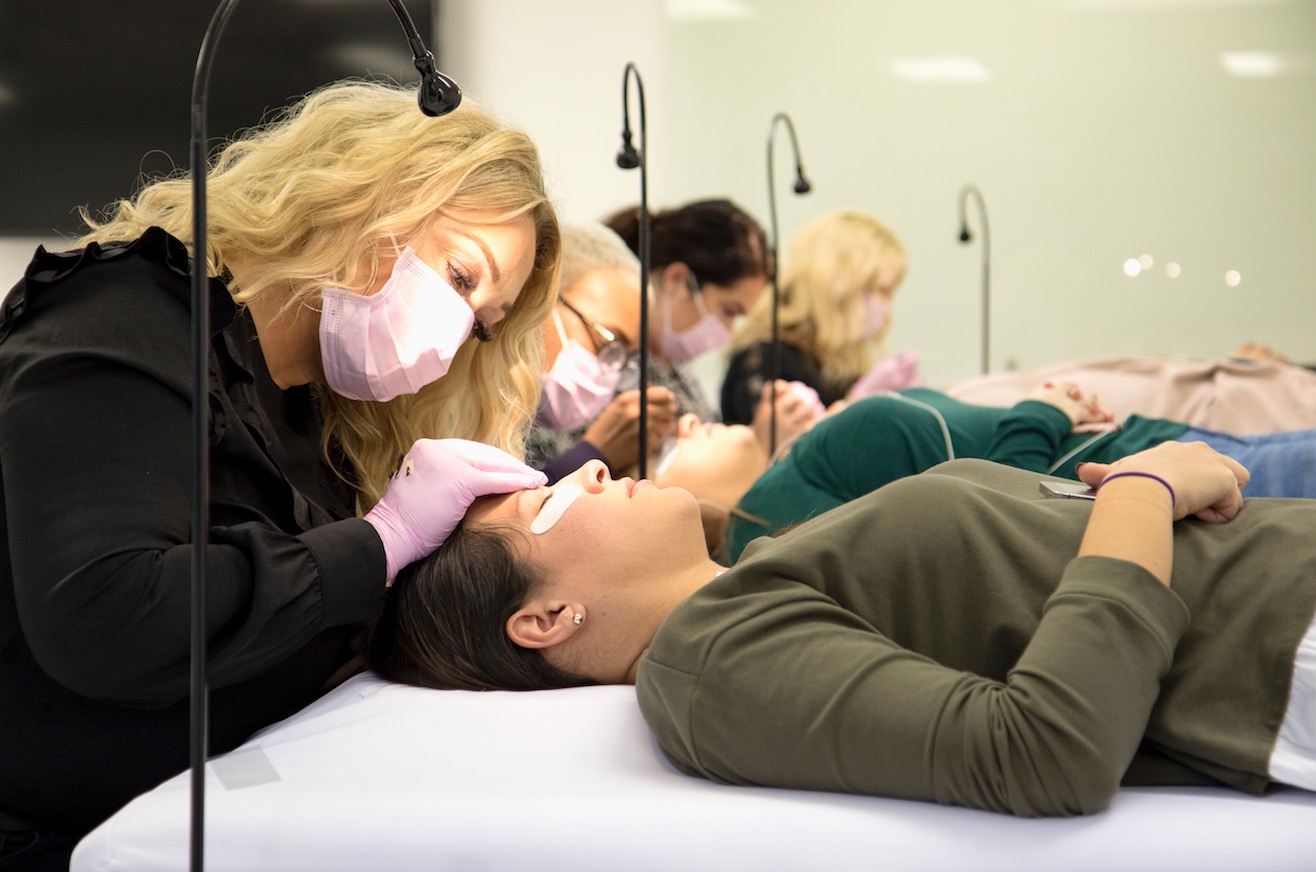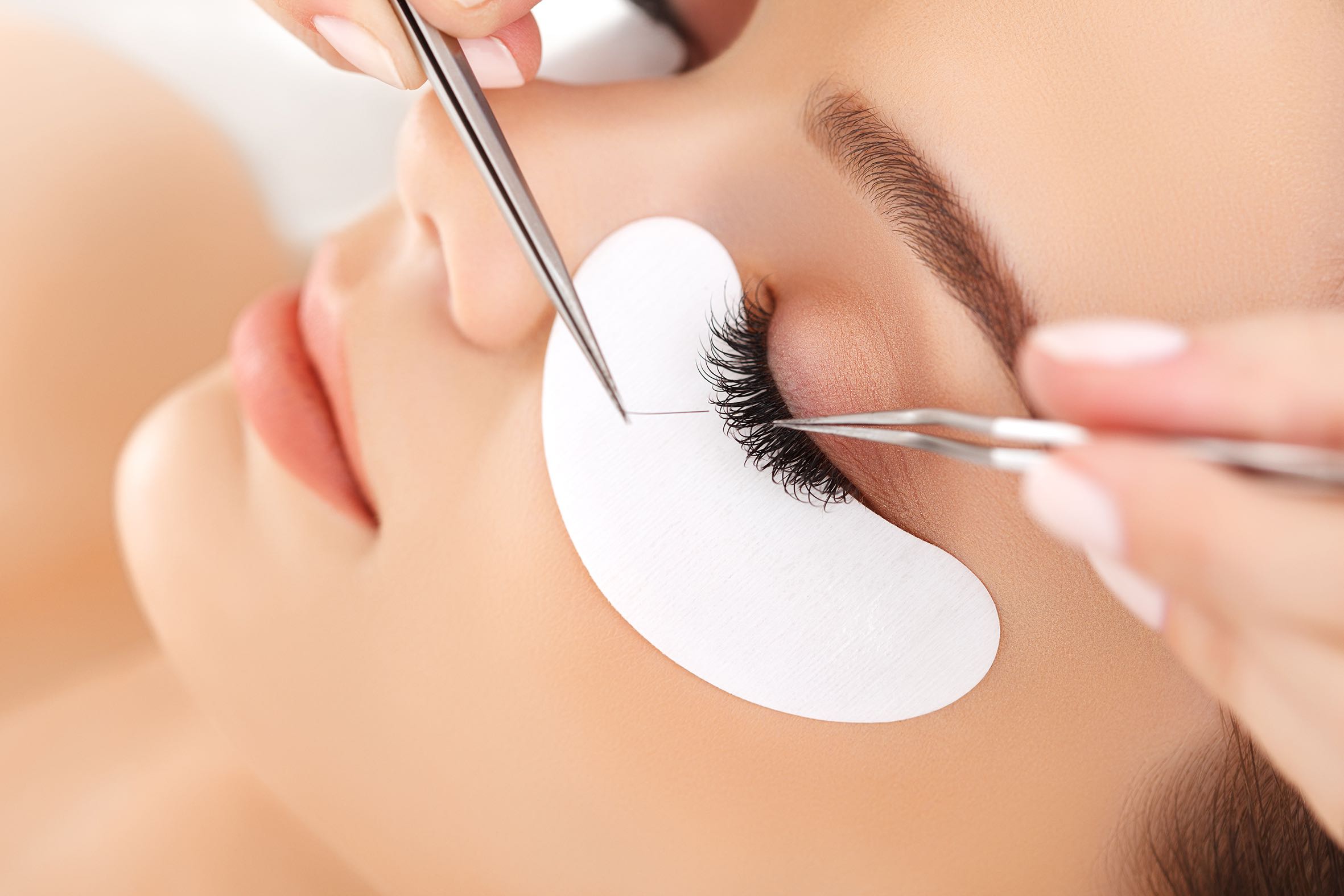How to do your client's eyelash extensions like a pro [troubleshooting guide]
![How to do your client's eyelash extensions like a pro [troubleshooting guide]](https://d3sc42dkmius1e.cloudfront.net/Upload/669/CMS/News/Photos/ace7cf07-7f7.jpg)
What are the benefits of clients having lash extensions?
“The treatment is a specialised technique where individual synthetic lashes are applied to the natural lashes one by one, creating a look that can vary from natural to very dramatic,” says Natalie Piper, business development manager for The Eyelash Design Company, which manufactures Lash Perfect.
“The advantages of extensions is that if someone has very small or fine lashes, you can give them more volume and definition. However, the treatment takes longer than lash lifts – around two hours – and requires the client to come back every two to three weeks for infills. However, the extensions will naturally fall out when the client’s lash cycle is over.”
How do I start training in lash extensions?
Most people start by learning classic lash extensions and then move on to more advanced options such as 3D or Russian volume. “Russian volume is a more advanced technique where ultra-fine lashes are used to build a fan to create thickness,” says Sonia Gapper, head educator in the South West for lash brand The Eyelash Emporium.
Both services require therapists to attend a one-day training course, where they learn the theory and practical side, while those who attend the extensions class will need to provide case studies afterwards which are critiques, usually a minimum of three.

What’s the most common application mistake lash artists make?
Lash extensions are a detailed service requiring a lot of practice post-training to master the skill. “You wouldn’t expect to get in a car and drive it straightaway, the same way after your extensions training you shouldn’t expect to be given tweezers and a pack of lashes and be proficient,” explains Angela Thiagarajah, product developer and training development manager for pro brand Nouveau Lashes.
Thiagarah advises therapists to be patient and do as much practice as possible – asking family and friends to be models. She says many wannabe artists also make the mistake of picking up too much adhesive, adding, “a tiny bead is all you need to stick the extension to the natural lash.”
How do I say no to clients asking for extensions that will damage their lashes?
“Being a well-respected lash artist is about creating long-lasting results. However, for some clients, the look they want may not be possible, so managing expectations is an invaluable skill to learn,” says Zachary Falb, global master trainer for lash extensions brand Novalash.
“An initial consultation is key to gathering information about your client’s expected outcomes and it’s at this point you need to avoid giving false expectations. For example, if a client is being persistent that they want extra-long or thick extensions and you know this is not suitable for their natural lashes, say no, explain why and then offer an alternative look that will work better.
“As a lash artist, you understand the difference between a set of extensions that would damage a client’s natural lashes versus a set that would not, so make sure to educate your clients about this.”

What’s the correct way to patch test for lash extensions?
“With Lash Perfect’s lash extensions treatments you don’t need to patch test, which is great – nothing touches the skin and there are no known allergens in the lash extension glue,” explains Piper.
“However, if you have a client who is really sensitive and they want to make sure that they don’t have a reaction, we have a sensitive adhesive you can use. The only way to do a true lash extension patch test to see if the client is allergic to the glue is to place one or two lashes either side of the eye. You wouldn’t want to put the lash extension glue on the skin because in the treatment that doesn’t happen.”
What advice should I give to clients about improving their lash condition?
“There are other great ways your clients can improve the condition of their lashes, from using conditioners such as olive oil and green tea, which should be applied at night, to over-the-counter lash serums,” advises Michelle Washington, chief executive of Innovative Nutraceutical Cosmetics and founder of the Avante range.
“When choosing a serum, tell clients to stay away from products that contain alcohol and perfume. The best ingredients for boosting growth are vitamin E, biotin and panthenol, as well as lash stimulators like castor oil and liquorice root.
“Whatever serum clients go for, they should apply it once a day like a liquid eyeliner, and most that are available on the market can be used under make-up.”

How do I warn clients about the dangers of attempting to recreate lash extension services on themselves at home?
Beverly Piper, co-founder of The Eyelash Design Company, highlights the dangers of non-professionals attempting the treatment themselves: “Not only are you using sharp metal tools near your own open eye, but you will also be partly blocking your own vision… since you can't see all that well, who knows where these lashes are being placed, and if they are in the right position or not? Even one misplaced lash can cause quite a bit of discomfort and look unsightly.”
She adds that it’s important to highlight to consumers that during professional services the eyes are closed to reduce the chance of getting adhesive in the eyes, and the lower lashes are separated from the upper to avoid sticking them together “…especially if you’re using a strong adhesive, your lashes will be difficult to separate without causing damage.”
The end result? Fabulous lashes that your clients will be dying to show off...
Watch our videos on the difference between lash lifts and lash extensions and why you should enter Professional Beauty's Lash Championships.
Images: top @NouveauLashes, second @Novalash, third @Shutterstock, fourth @London Lash & Brow


